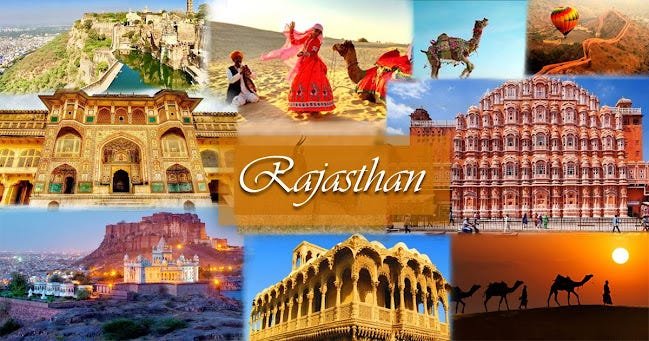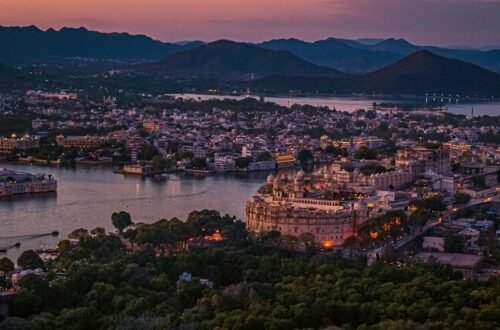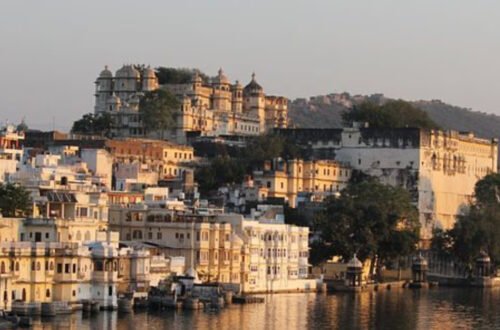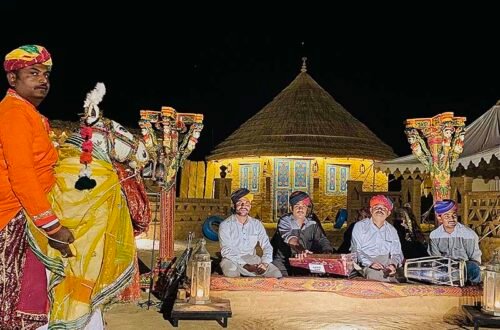The idea of rain in Rajasthan may seem contradictory at first—after all, the state is famed for its vast deserts, arid climate, and scorching summers. But for those who’ve experienced the monsoon magic in this vibrant state, there’s no mistaking its charm. The monsoon months transform Rajasthan’s dusty landscapes into lush, vibrant tapestries, bringing a refreshing break from the heat and painting a new picture of this historic land. Whether you’re an adventure enthusiast, a culture seeker, or someone simply yearning for an offbeat travel experience, the rainy season in Rajasthan offers something unique. This is when seasoned travelers often recommend choosing a Tour Operator in Rajasthan to help curate the ideal rainy retreat.
Why Rain in Rajasthan Feels Magical
Unlike tropical regions where rains are frequent and intense, Rajasthan’s monsoon is brief but memorable. The rains here bring relief, a change in air, and a sense of calm. From mid-July to early September, the monsoon clouds roll in, scattering gentle showers across dunes, lakes, and ancient forts. The desert’s earthy aroma, the glistening sand after rainfall, and the sudden emergence of greenery all offer a compelling sensory experience.
These moments of calm, paired with Rajasthan’s rich heritage and artistic traditions, make the monsoon one of the best times to explore the state differently. Instead of the dry, harsh desert sun, you get cloudy skies, occasional drizzles, and an entirely new side of Rajasthan’s soul.
Best Places to Witness Rajasthan in Rain
Udaipur – The City of Lakes Comes Alive
Udaipur, known for its palaces and lakes, becomes even more mesmerizing during the rains. The monsoon clouds mirrored in Lake Pichola and Fateh Sagar create picture-perfect moments for travelers and photographers alike. The cool breeze sweeping through the city and the slightly misted Aravalli hills in the background add to its romantic aura. No wonder it’s a favorite in Romantic Rajasthan tour itineraries.
Boating in the lakes, sipping hot chai at a rooftop café, or walking through the narrow lanes of the old city becomes a delightful experience when raindrops gently fall.
Mount Abu – A Green Escape in the Aravallis
As the only hill station in Rajasthan, Mount Abu is naturally one of the best spots to enjoy rain. The surrounding forests become thick with monsoon mist, and spots like Nakki Lake, Toad Rock, and the Guru Shikhar viewpoint offer refreshing panoramas. The natural beauty is amplified during the rains, making it a favorite among honeymooners and nature lovers.
Mount Abu is also known for its marble Jain temples, which take on a surreal beauty in the cloudy monsoon light.
Bundi – Offbeat and Beautiful in the Rains
Less commercialized than its counterparts, Bundi offers a rustic monsoon charm. The city’s ancient stepwells, blue houses, and the majestic Taragarh Fort feel almost cinematic with rain-kissed walls and moss-covered steps.
Bundi also has natural waterfalls nearby, such as Bhimlat and Jait Sagar Lake, which come alive during monsoon, offering visitors hidden natural treasures rarely seen in dry months.
Pushkar – Spirituality with a Touch of Monsoon
While Pushkar is often associated with its camel fair and spiritual ambiance, it’s a hidden gem in the rains. The monsoon adds a serene charm to the sacred Pushkar Lake and the temples that surround it. The light drizzle enhances the mysticism of this holy town, where sadhus, artists, and seekers all gather in a blend of spirituality and simplicity.
The monsoon is also a quieter time here, making it ideal for peaceful reflection and immersive cultural experiences.
Jaipur – Pink City in Grey Skies
The capital city wears a different shade during the rainy season. Forts like Nahargarh and Jaigarh offer stunning views of the rain-washed cityscape, while Amer Fort looks even more majestic under cloudy skies. With fewer tourists during monsoon, you can explore local markets, palaces, and gardens in a more relaxed setting.
The vibrant bazaars, now glistening with rainwater, invite you to explore Rajasthani textiles, jewelry, and street foods at your own pace.
What to Expect When Traveling During Monsoon in Rajasthan
- Cooler Temperatures: Compared to the intense heat of May and June, the monsoon brings pleasant relief. Days are breezy and evenings comfortable for walks and open-air dining.
- Fewer Crowds: Monsoon is considered off-season for tourism in Rajasthan. This means discounted rates, easier hotel bookings, and less crowded monuments.
- Rich Visual Landscapes: The Aravalli range and desert areas bloom with seasonal flowers and greenery. The contrast of rain on sandstone architecture creates stunning visual contrasts.
- Cultural Festivities: Some festivals like Teej and Raksha Bandhan fall during this time, giving travelers a glimpse of traditional customs, local foods, and celebratory dances.
How to Plan a Monsoon Trip in Rajasthan
Planning a monsoon trip to Rajasthan requires thoughtfulness. Choose destinations known for scenic beauty during rains. Carry lightweight rainwear and waterproof shoes. Always check road and weather conditions, especially if traveling to hill areas like Mount Abu.
Most importantly, opt for curated travel packages that focus on seasonal experiences. These often include heritage walks, lake tours, folk performances, and exclusive stays in monsoon-ideal regions. For those looking for a truly immersive journey, the Exotica Rajasthan tour packages offer customized itineraries designed to showcase the seasonal allure of the desert state.
Final Thoughts
Rain in Rajasthan is a fleeting yet powerful experience. It redefines the way we look at deserts, castles, and camels. It’s not just about sightseeing—it’s about soaking in a slower, more poetic version of Rajasthan. From cloud-covered forts and emerald hills to lakeside reflections and monsoon melodies, the experience is rich, authentic, and unforgettable.
And when curated with expert planning, your rainy Rajasthan escape can turn into a story you’ll tell for years to come.





